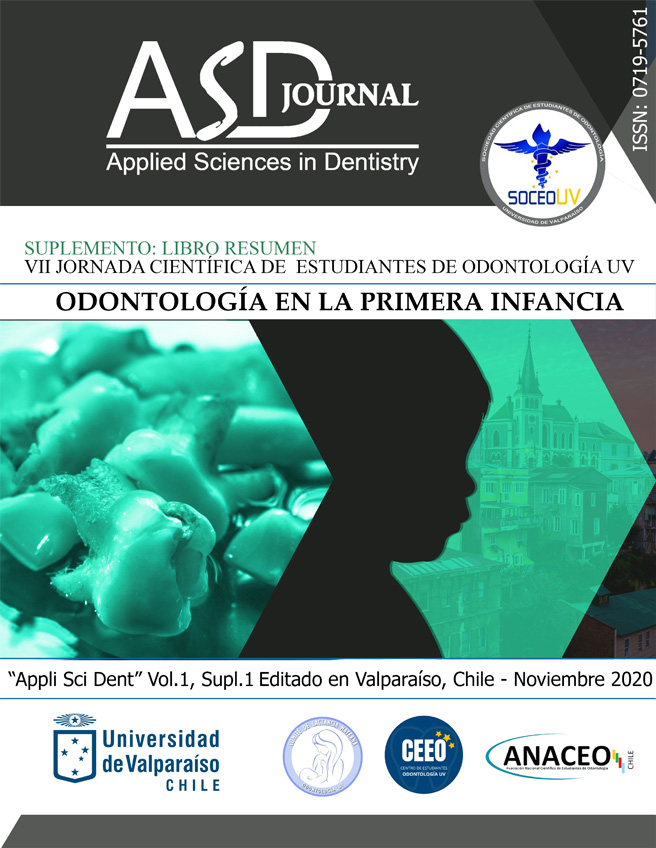Complex oral rehabilitation in a 4-year-old patient with severe early childhood caries
Keywords:
Early childhood caries, dental caries, treatmentAbstract
Background: Early childhood caries (ECC) is the presence of one or more cavities, tooth decay, or smooth surfaces filled with caries in children up to 71 months. ECC has a negative impact on the quality of life and general health, being associated with functional limitation, pain, and infection, which leads to alterations such as discomfort, malocclusions, psychological and social affectation, among others, preventing the adequate growth and development of the patient. The objective is to present the complete handling and resolution of a case.
Clinical Presentation: 4-year-old female patient, cooperative, in condiction of social risk, adolescent mother, ECC, poor oral hygiene, with high cariogenic risk and activity. She presented multiple caries lesions with great coronary destruction. In the preventive phase, risk factors were modified regarding diet, oral hygiene, fluorotherapy, and the mother's education and motivation. Subsequently, direct and indirect pulp therapies were performed. The rehabilitation was performed using glass ionomer, composite resin, metal crowns for molars, and celluloid crowns filled with resin anchored to fiberglass posts in the anterior superior sector.
Clinical Relevance: Early detection and prevention are essential to control the disease. Rehabilitation is complex, expensive, depending on the availability of therapeutic resources, the caregiver's interest, skills of the dentist, behavior, and patient's age. Pulp therapies are treatments that allow the preservation of teeth. Fiberglass posts provide retention to the restoration of teeth with insufficient tooth remnants. The preformed celluloid crowns filled with resin are indicated to reconstruct teeth with great destruction and aesthetic needs.
Conclusions. There was an improvement in social relationships and the self-image of the patient. The success of ECC treatment depends mainly on the interest and collaboration of the caregiver and patient. Attention should be focused on prevention, education, and motivation, making personalized recommendations focused on the family. It is important to carry out periodic controls, which allow to maintain the patient's health.Downloads
Downloads
Published
How to Cite
Issue
Section
License
Authors retain copyright and grant the journal right of first publication with the work simultaneously licensed under a Creative Commons Attribution 4.0 International License that allows others to share the work with an acknowledgment of the work's authorship and initial publication in this journal.
Authors are able to enter into separate, additional contractual arrangements for the non-exclusive distribution of the journal's published version of the work (e.g., post it to an institutional repository, in a journal or publish it in a book), with an acknowledgment of its initial publication in this journal.
Authors are encouraged to post their work online (e.g., in their institutional repositories or on their website) only after publication online.
When uploading, disseminating or repurposing Open Access publications, the journal should be clearly identified as the original source and proper citation information provided. In addition to the Version of Record (final published version), authors should deposit the URL/DOI of their published article in any repository.


